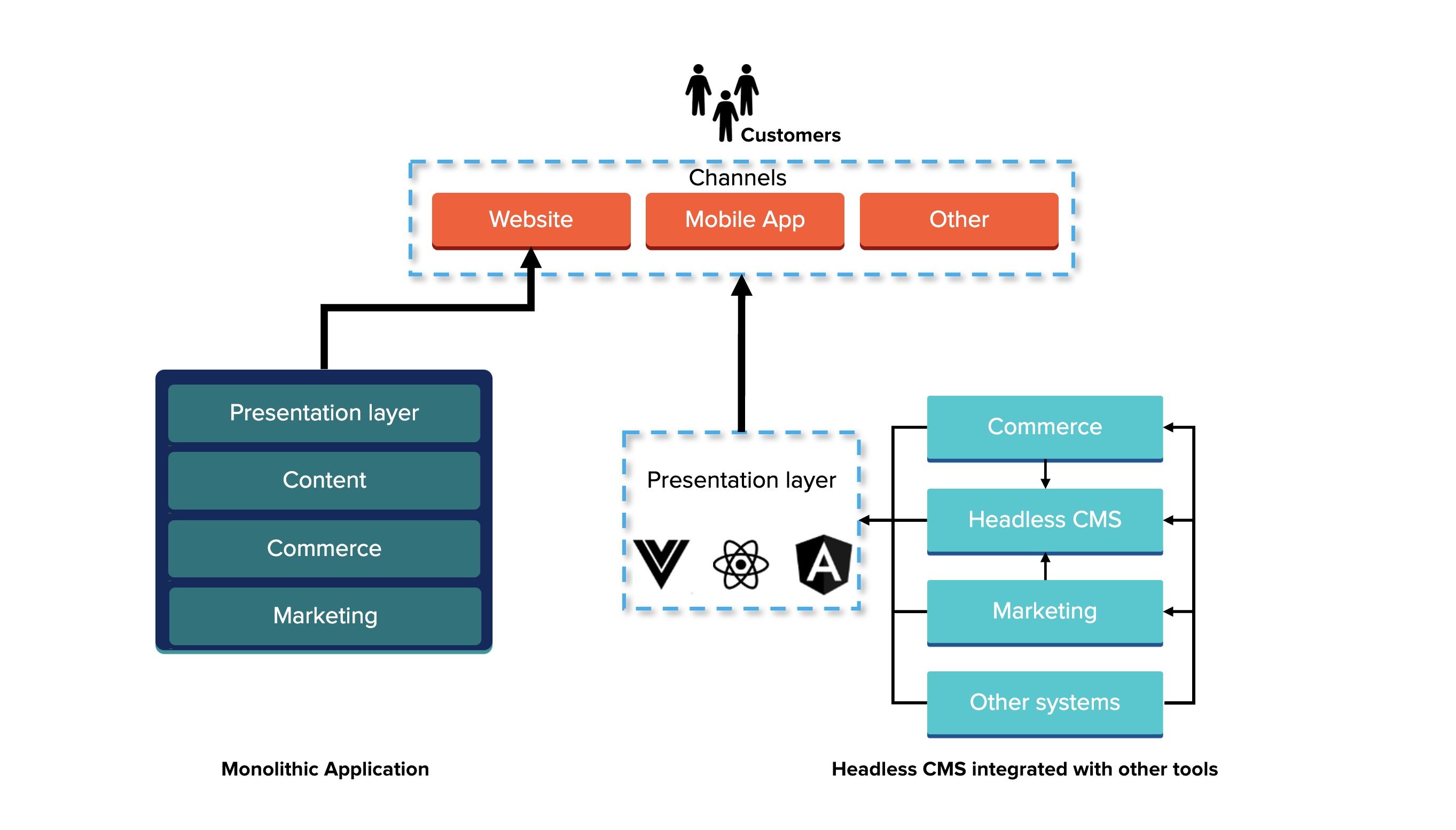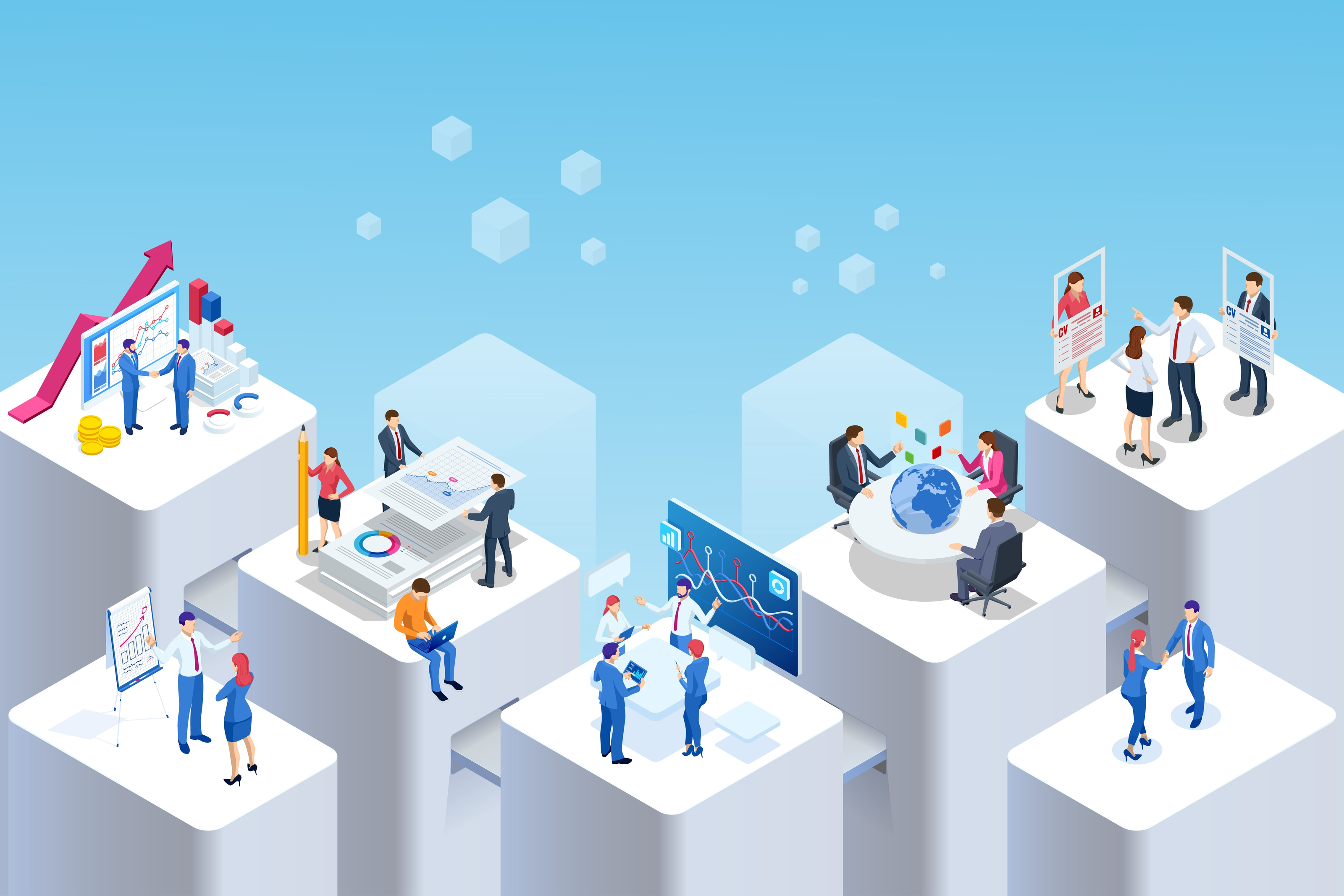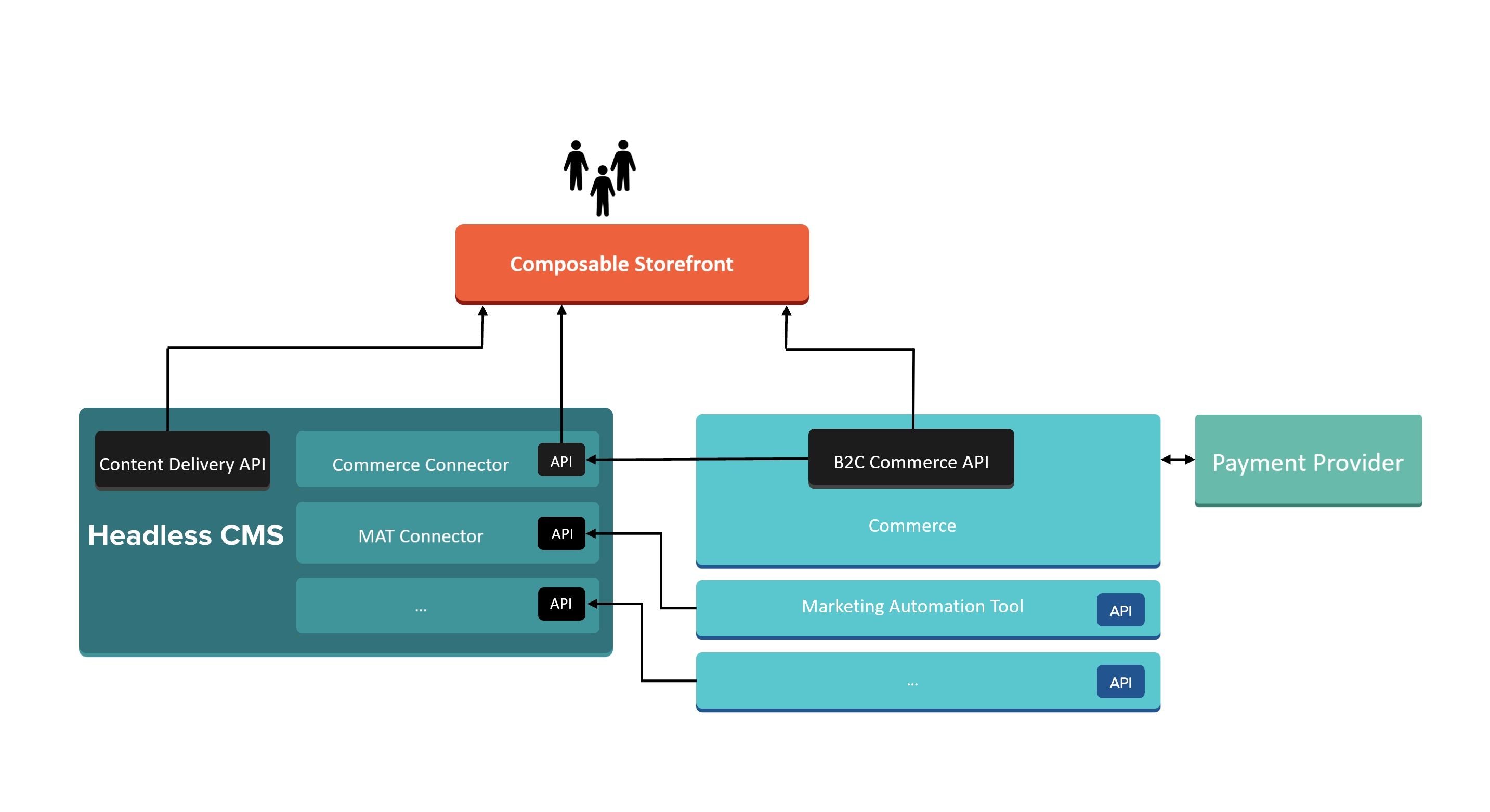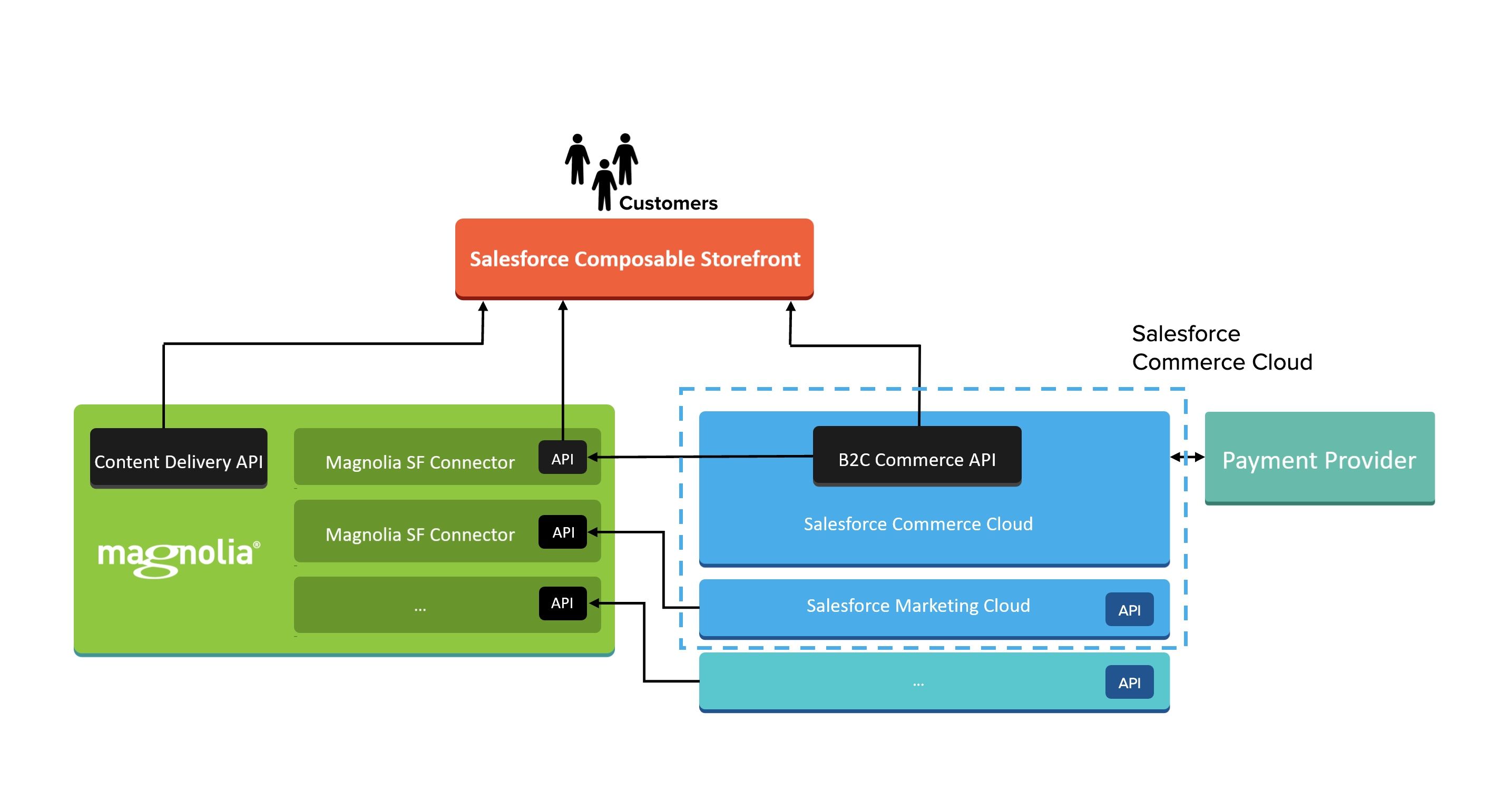Content management systems (CMS) are an important part for businesses to manage their digital content. With the increasing number of channels and devices, managing content and the need to distribute it through different channels is increasing every day, and therefore also the complexity increases. In addition, the need for flexible and easily integrated systems is also increasing. All of this pushes traditional CMS to their limits.
Traditional CMS solutions are monolithic systems designed for content creation and management as well as content delivery. This means that the CMS is responsible not only for managing content, but also for the presentation layer on the front end. In addition, traditional CMSs tend to be the central system and in some cases also take responsibility for commerce or marketing functions. Since the backend and frontend are tightly coupled and the CMS tends to be the solution for everything, traditional CMSs lose flexibility when it comes to place them in modern architectures and integrating with other tools. This is where headless CMS comes into play.
Headless CMS has been around for several years now. In recent years, it has received a lot of attention due to the increasing amount of published content and the need to distribute this content through different channels, but also due to the need to better integrate a CMS with other systems into a modern web architectures.
A headless CMS is a simplified version of a traditional CMS. It has the same concept when it comes to content creation and management, incl. storage, permissions, versioning and workflows. However, unlike the traditional CMS, it does not have the ability and responsibility to take care of the front-end presentation layer. In other words, a headless CMS separates content creation and its management from content delivery. This means that the headless CMS provides the content through the API (Application Programming Interfaces). Other applications - which are completely decoupled from the CMS, take responsibility for the presentation layer. This type of architecture makes it possible for content to be distributed across multiple channels and devices, resulting in a seamless and personalized experience.
Moreover, Headless CMS are designed to be modular and fit into modern architectures without taking on more tasks than a content management system should have. This way, businesses can add or remove systems modularly at any time without having to change everything.

















